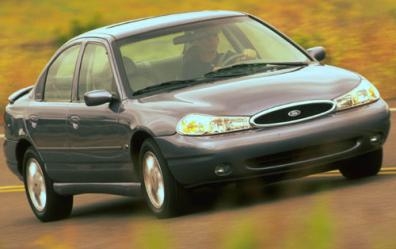
A car that fell in between compact and midsize, the Contour was Ford's first attempt to make a car that can be sold across the world with nothing but minor changes from region to region. Below are the problems associated with the vehicle during its production run, 1995 to 2000.
Defects common to the 1995 Contour include slipping drive belt, engine misfire, improper inflation of the passenger side air bag, faulty steering, transmission fluid leaks and transmission noise, brittle front safety belt outboard anchor tabs, and damaged throttle cable for traction control. In addition to the 1995 model, delicate floor shift automatic transmission controls apply to 1996, 1997 and 1998 as well.
Moreover, the Contour had certain aftermarket parts---hydraulic master cylinders and ball joint assemblies---that needed to be recalled. Engine overheating and heater cores leaks are recurring problems in all Contours.
The 1996 entry has virtually all the problems of its immediate predecessor. However, a few vehicles from this year can develop overheating of the terminals at the headlight switch and wiring harness connector.
Failure of the variable camshaft timing actuator and sprocket, as well as the water pump, plagued the Contour from this model year onward. Also, some 1997 Contours might have issues with the temperature gauge sending unit.
The failure of the anti-lock brake system (ABS) is unique to the 1998 edition. A few vehicles might need the front coil springs inspected for corrosion, as they could fracture and lead to tire deflation. Some post-1998 Contours might need their fuel tank filler pipe grommets checked for damage during bi-fuel system installation.
There are significantly less problems with the 1999 Contour than with previous models. However, it is not spared from issues that plague virtually all model years, most particularly engine-related defects.
The last Contour entry was built with an incorrect power brake booster and master cylinder assembly, which adversely reduces brake performance. The seat belt assemblies in some vehicles were not properly heat-treated, thus leading to possible inadequate restraining in the event of an accident.